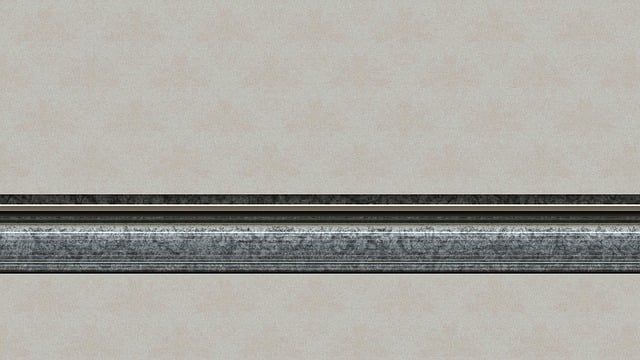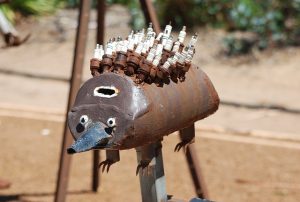Injection molding is a key manufacturing process for producing precise and complex plastic parts at scale. To enhance its efficiency, manufacturers are optimizing mold design, material handling, and system integration, which reduces cycle times and costs by using fewer cavities and hot runner systems that minimize waste. Precise temperature control within the molding machines and monitoring of material viscosity are crucial for maintaining part quality and preventing defects or delays. Advanced software for temperature regulation and predictive maintenance using IoT sensors and data analytics help maintain optimal machine performance, reducing downtime and extending equipment lifespan. By focusing on strategic material selection and design optimization, companies can achieve cost savings without compromising part functionality. Injection molding's efficiency is further elevated through the adoption of real-time monitoring systems, lean manufacturing practices, and strategic process enhancements, ensuring a consistent production flow and high-quality output while maximizing profitability. These improvements underscore a commitment to operational excellence within the injection molding sector.
In the realm of large-scale manufacturing, injection molding stands as a pivotal process offering both precision and efficiency. This article delves into cost-effective solutions tailored for this method, exploring strategies that enhance productivity without compromising on quality. We will navigate through optimization techniques in injection molding, cost analysis for balancing affordability with high standards of output, and best practices for maximizing throughput. From evaluating material costs to implementing advanced technologies, each section is designed to provide manufacturers with actionable insights for streamlining their processes and achieving economic success. Join us as we dissect the intricacies of injection molding and offer a comprehensive guide to cost-efficient large-scale production.
- Optimizing Injection Molding Efficiency for Large-Scale Production
- – Evaluating Material Costs and Savings
- – Streamlining Process Flow for Enhanced Productivity
Optimizing Injection Molding Efficiency for Large-Scale Production

In large-scale production, injection molding stands out as a pivotal process due to its ability to mass-produce complex and intricate plastic parts with high precision and repeatability. To optimize this process for efficiency, manufacturers must focus on several key factors. Firstly, the design of the mold itself plays a crucial role in productivity. Streamlined molds with fewer cavities can reduce cycle times, allowing for more parts to be produced within a given timeframe. Additionally, incorporating hot runner systems can eliminate cold runner waste and increase the rate of production. These systems also facilitate quicker changeovers between different mold designs, which is essential for manufacturing diverse products efficiently.
Furthermore, maintaining optimal temperatures within the molding machine and monitoring the material viscosity are critical to prevent defects and downtime. Adopting advanced control software can automate temperature regulation, leading to consistent part quality and minimal material wastage. Predictive maintenance strategies, leveraging IoT sensors and data analytics, ensure that machines operate at peak performance by anticipating potential issues before they occur. This proactive approach not only reduces unplanned stoppages but also extends the lifespan of the equipment, thereby contributing to a more efficient and cost-effective large-scale injection molding operation. By implementing these strategies, manufacturers can significantly enhance their injection molding processes, leading to increased production rates and cost savings that are imperative in today’s competitive market.
– Evaluating Material Costs and Savings

When strategizing for large-scale manufacturing, particularly in processes like injection molding, evaluating material costs and potential savings is a pivotal step. Injection molding stands out as a highly efficient production method, capable of producing complex parts with precision and repeatability. Companies must closely scrutinize the types of materials they use, as this can significantly impact both the cost and the quality of the final product. By selecting cost-effective resins that meet the necessary performance criteria, manufacturers can reduce expenses while maintaining high standards for their outputs. Additionally, optimizing the design for injection molding to minimize material usage without compromising part functionality can lead to substantial savings. This optimization not only reduces raw material costs but also minimizes waste and lowers energy consumption during the manufacturing process, further contributing to overall cost reductions.
Furthermore, leveraging advanced simulation software in the design phase can predict potential issues and optimize the mold design for better flow of materials, which can prevent costly rework or scrap rates associated with traditional trial-and-error approaches. By adopting a systematic approach to material selection and part design, manufacturers in the injection molding sector can achieve both cost efficiency and quality assurance at scale. This foresight and strategic planning are essential for maintaining a competitive edge in the industry, ensuring that each component produced is not only cost-effective but also meets the required specifications and performance benchmarks.
– Streamlining Process Flow for Enhanced Productivity

In the realm of large-scale manufacturing, injection molding stands out as a pivotal process that demands both precision and efficiency to yield high-quality products at a rapid pace. To enhance productivity within this process, streamlining the flow of operations is crucial. Companies can achieve this by integrating advanced technologies such as real-time monitoring systems that track the performance of each injection molding machine, allowing for immediate adjustments and corrections. This proactive approach to managing production reduces downtime and minimizes disruptions, ensuring a smooth and continuous operation. By optimizing the sequence of steps from raw material feeding to the ejection of finished parts, manufacturers can significantly boost throughput without compromising on product quality. Additionally, adopting lean manufacturing principles can further refine the process flow, eliminating unnecessary steps and reducing waste. This not only accelerates production but also enhances cost-effectiveness by cutting down on material consumption and energy usage. The strategic placement of injection molding machines, thoughtful allocation of human resources, and the implementation of predictive maintenance schedules are all elements that contribute to a streamlined process flow, ultimately elevating productivity in large-scale manufacturing environments. These targeted improvements in the injection molding process can lead to substantial gains in efficiency and profitability for manufacturing operations.
Injection molding remains a cornerstone of large-scale manufacturing, offering both scalability and precision. This article has explored effective strategies for optimizing this process, with a focus on evaluating material costs and savings, as well as streamlining the production flow to enhance productivity. Implementing these cost-effective solutions can lead to significant improvements in manufacturing efficiency, ultimately positioning businesses at the forefront of their industry. By adopting these best practices in injection molding, companies can not only reduce expenses but also increase output, ensuring a competitive edge in the marketplace.
